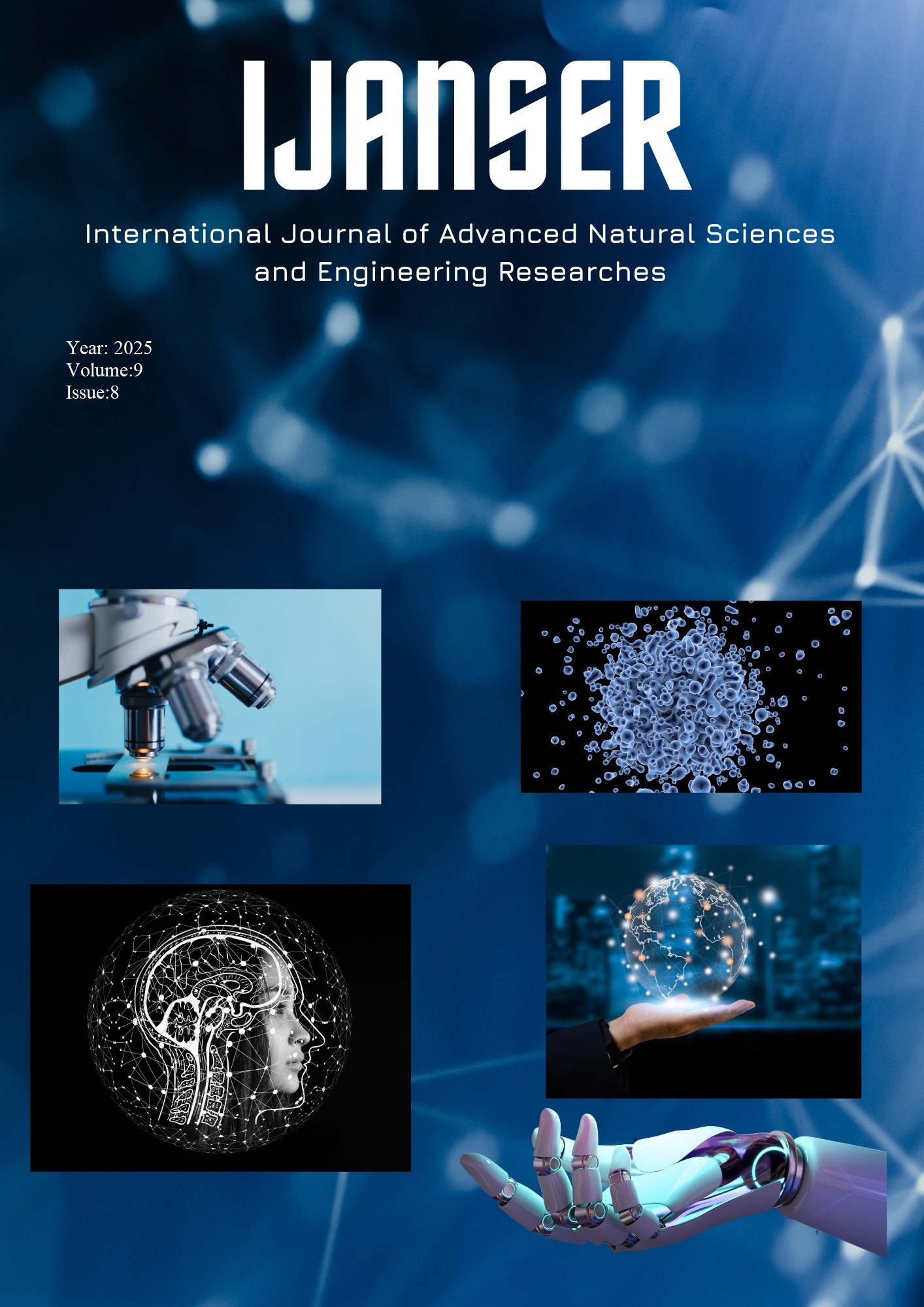Experimental Analysis of Gating Desing for Rapid Investment Casting of Aluminium Dies
Keywords:
Rapid Investment Casting, Die Development, Aluminum, Gating System, Surface Roughness, Dimensional AccuracyAbstract
This study examined how three different gating systems impacted the quality of aluminum dies
developed through rapid investment casting. Gating System A, which featured a vertical setup with two
ingates and effective venting, achieved a surface roughness of 3.2 μm, a minimal dimensional deviation
of ±0.4 mm, and the highest hardness value of 35 HRB, demonstrating better performance. It also had the
fewest surface defects, displaying an excellent finish with no signs of porosity or cold shut. Gating
System C used the bottom fill technique and lacked a top ingate, resulting in moderate outcomes: a
surface roughness of 4.5 μm, a dimensional deviation of ±0.8 mm, and a hardness of 31 HRB. Minor
defects such as localized shrinkage marks and waviness were observed. Conversely, Gating System B
proved to be the least effective, as it used only a top ingate and had improper venting. It had the lowest
hardness at 28 HRB, with a surface roughness of 6.5 μm, and the highest dimensional error of ±1.2 mm.
It also exhibited many surface defects, including air entrapments, cold shuts, and uneven surfaces caused
by turbulent flow and insufficient feeding. These findings underscore the importance of optimizing gating
design to achieve desirable mechanical properties, accurate dimensions, and smooth surface finishes in
the production of aluminum dies via rapid investment casting.
Downloads
References
P. Suwankan, N. Sornsuwit, and N. Poolthong, "Design of runner and gating systems for the investment casting of 431 stainless steel netting hook through numerical simulation," Key Engineering Materials, vol. 659, pp. 647-651, 2015.
F. Li, Y. Wang, D. Wang, Y. Zhao, C. Qi, and B. Sun, "Comparison of various gating systems for investment casting of hydraulic retarder impeller with complex geometry," Proceedings of the Institution of Mechanical Engineers, Part B: Journal of Engineering Manufacture, vol. 235, no. 4, pp. 583-593, 2021.
J. Xiong, Y. Mao, and H. Zhao, "Additive manufacturing of high-strength weathering steel parts fabricated by gas tungsten arc: microstructure and mechanical properties," Proceedings of the Institution of Mechanical Engineers, Part B: Journal of Engineering Manufacture, vol. 233, no. 11, pp. 2127-2137, 2019.
A. Yadav, R. K. Garg, A. Sachdeva, and M. R. N. M. Qureshi, "Comparing environmental sustainability of additive manufacturing and investment casting: Life cycle assessment of Aluminium LM04 (Al-Si5-Cu3)," Materials Science and Engineering: A, vol. 923, p. 147765, 2025.
T. Wang, X. Shen, J. Zhou, Y. Yin, X. Ji, and Q. Zhou, "Optimal gating system design of steel casting by fruit fly optimization algorithm based on casting simulation technology," International Journal of Metalcasting, vol. 13, no. 3, pp. 561-570, 2019.
J. Yu et al., "Engineering computing and data-driven for gating system design in investment casting," The International Journal of Advanced Manufacturing Technology, vol. 111, no. 3, pp. 829-837, 2020.
S. CASTING. The Basics of Investment Casting Gating Syetem Design. Available: https://investment-casting.net/investment-casting-gating-system-design/
M. M. Jalilvand, H. Saghafian, M. Divandari, and M. Akbarifar, "Surface oxidation study of molten Mg–Al alloys by oxide/metal/oxide sandwich method," Journal of Magnesium and Alloys, vol. 10, no. 6, pp. 1704-1717, 2022.
M. Neuser, O. Grydin, A. Andreiev, and M. Schaper, "Effect of solidification rates at sand casting on the mechanical joinability of a cast aluminium alloy," Metals, vol. 11, no. 8, p. 1304, 2021.
M. Brůna, M. Galcik, R. Pastircak, and E. Kantorikova, "Effect of Gating System Design on the Quality of Aluminum Alloy Castings," Metals, vol. 14, no. 3, p. 312, 2024.
H. Nunes, O. Emadinia, R. Soares, M. F. Vieira, and A. Reis, "Adding value to secondary aluminum casting alloys: a review on trends and achievements," Materials, vol. 16, no. 3, p. 895, 2023.
M. A. El-Sayed, K. Essa, and H. Hassanin, "Effect of runner thickness and hydrogen content on the mechanical properties of A356 alloy castings," International Journal of Metalcasting, vol. 16, no. 4, pp. 2175-2186, 2022.
G. Gyarmati, G. Fegyverneki, M. Tokár, and T. Mende, "Investigation on double oxide film initiated pore formation in aluminum casting alloys," International Journal of Engineering and Management Sciences, vol. 5, no. 2, pp. 141-153, 2020.
S. H. Majidi and C. Beckermann, "Effect of Pouring Conditions and Gating System Design on Air Entrainment During Mold Filling," International Journal of Metalcasting, vol. 13, no. 2, pp. 255-272, 2019/04/01 2019.
K. Metzloff, K. Mageza, and D. Sekotlong, "Velocity measurement and verification with modeling of naturally pressurized gating systems," International Journal of Metalcasting, vol. 14, no. 3, pp. 610-621, 2020.
R. Hardin, K. Choi, N. Gaul, and C. Beckermann, "Reliability based casting process design optimisation," International Journal of Cast Metals Research, vol. 28, no. 3, pp. 181-192, 2015.





